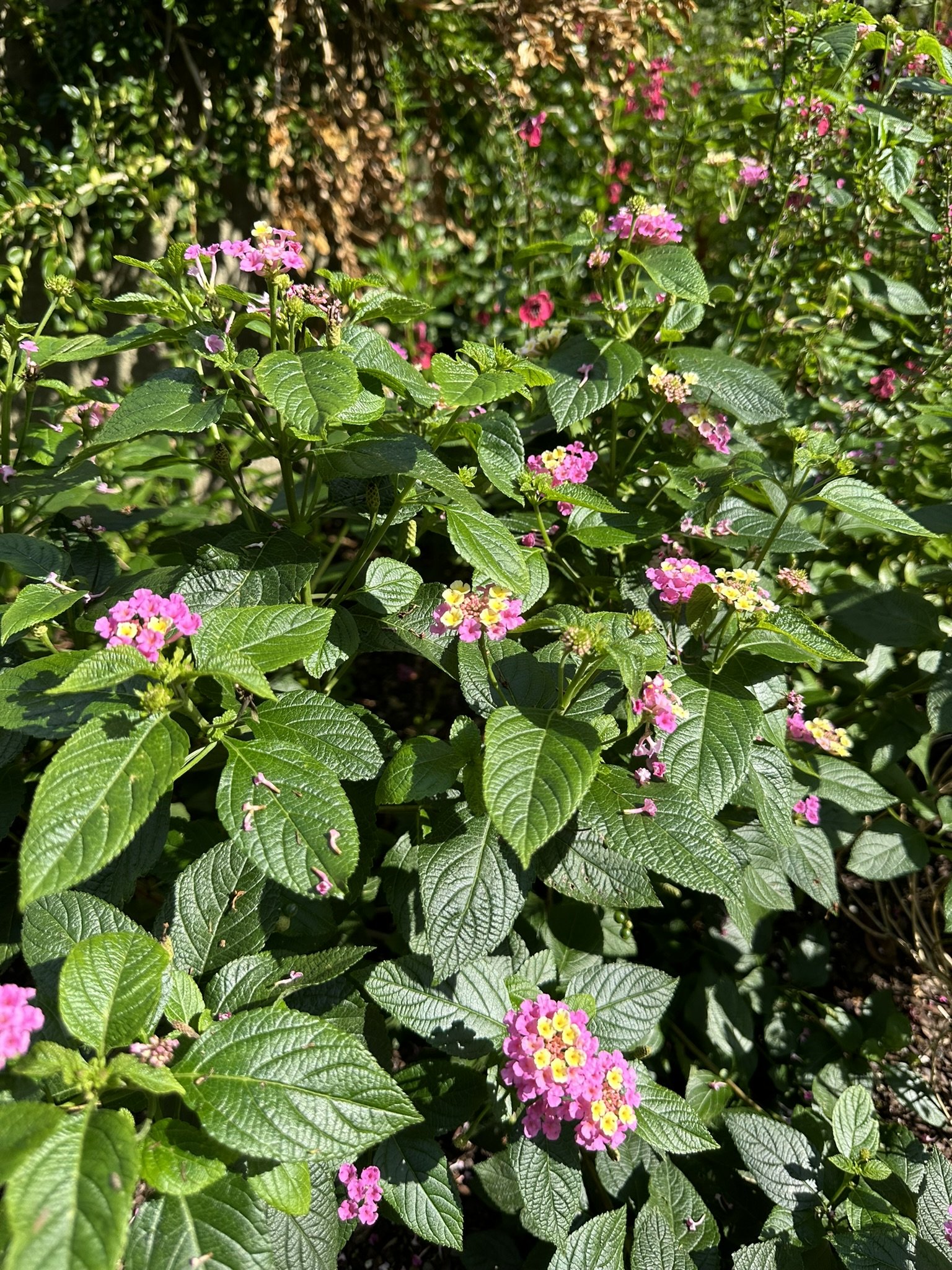Meet the Lantana
Lantana | Lantana camara
How do you know it’s me?:
I am a small-medium perennial shrub, or annual shrub in colder climates.
My blooms are dome-shaped, and consist of many little tube-shaped flowers. Many varieties have different colored flowers within the same bloom, with lighter colored flowers toward the center, and darker toward the edges (though this can be different from bloom to bloom, and between varieties).
Each tiny flower has 4-5 petals.
I have opposite leaves that are a pointed oval shape.
My leaf has a rough, sandpaper texture and serrated edges. Oftentimes, it is fragrant when crushed.
My stems are ridged (with a square cross section), and covered in hairs.
In fall I have blue-black berries.
How big do I grow?: 1’ - 6’ height and 3’ - 5’ spread.
Sun-seeker or shade-lover: Full sun.
Where I prefer to put my roots: Well-drained soil. I am tolerant of salt spray and drought conditions, and enjoy sandy soils.
Hardiness: Zone 7-11.
Original home: I am native to Central and South America.
Colors: My flowers can be red, yellow, orange, pink, purple, and/or white. Many varieties have multicolored flowers.
When I bloom: My long lasting blooms appear in mid-summer and remain until frost.
Wildlife friends: Butterflies and hummingbirds are attracted to my bright blooms, and birds will eat my berries. When growing wild, small lizards often make a home among my leaves.
Flora Fun Facts: The color of my flowers changes as the season progresses. Each tiny flower can be a different color when closed, than when opened. Some studies have found that my flowers also change color when pollinated, as an indicator to pollinators. These are all the reasons why each bloom contains different colored flowers.
More Info: The Lantana will provide months-long color to a garden, with bright bursts of coral and pastel tones that shift throughout the season. These unusual blooms can have a rainbow effect when the color changes are timed just right.
A member of the Verbenaceae (verbena) family.
The most frost-hardy cultivars include ‘Miss Huff’, ‘Ham and Eggs’, and ‘Chapel Hill Yellow.’ The many varieties available offer both upright options and low-growing, spreading options.
I am considered an invasive plant in some southern US states, as well as Africa, Australia, and many pacific islands.
Be careful when handling, as the leaves can cause minor skin irritation in some people. This plant is also toxic to livestock, and the berries can be poisonous to humans.
Lantana stalks and bark have been used as a raw material for paper pulp.
There are many studies on the medicinal value of this plant, which has been used for its anti-inflammatory, anti-fungal, and anti-bacterial properties. It was traditionally valued for wound-healing and addressing respiratory issues, and is also rich in antioxidants.
This plant is a great selection for a container, butterfly garden, or coastal garden.
In some parts of the United States (primarily in Florida), this is considered an invasive plant. While some cultivated varieties are considered sterile, native alternatives are recommended in these areas. Alternative plants for these warmer regions include Dune Sunflower (Helianthus debilis), and Firewheel (Gaillardia pulchella).










